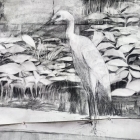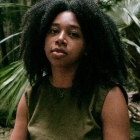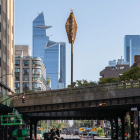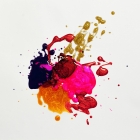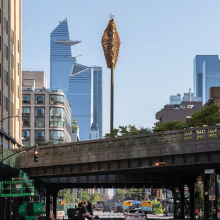
Jamaican artist Arthur Simms’ A Totem for the High Line is now installed at the 16th Street Spur Preserve in New York City’s Chelsea District. Standing majestically 40 feet high over the High Line, the commissioned sculpture of weathered utilitarian materials and personal effects is wrapped meticulously in rope. Simms says the totem is a monument to memory and history.
A Totem for the High Line is emblematic of the High Line and New York City. It incorporates a decommissioned utility pole from Randall’s Island, assorted cables, and discarded license plates from various states, suggesting intertwined journeys that connect in New York City. The High Line is a nonprofit organization and a public park built on a historic, elevated rail line on the West Side of Manhattan. It is devoted to reimagining public spaces to create connected, healthy neighborhoods and cities.
A Totem for the High Line is an homage to transformation and the perpetual unfolding of our past, present, and future. Simms’ practice is grounded in his cultural heritage and dual identity as Jamaican and American; he uses his sculpture to narrate stories of personal identity, family, spiritual and physical journeys, emotional tensions, and nostalgia for home.
Simms creates elaborate assemblages of seemingly disparate found and personal objects that reflect on his lived experience, familial history, and spiritual reverence. His work is autobiographical, using trinkets, materials more likely found in a hardware store than an art supply shop, and objects gifted by friends and loved ones that they view as “junk.” Simms pairs these elements with deeply personal belongings such as tufts of his and his wife’s hair, keys, identification cards, and letters from his late mother. He binds these discordant pieces by meticulously wrapping them with twine, wire, or hemp rope—the latter, a symbolic reference to his Jamaican roots—to the point of near non-recognition.
“It’s been an honor to work with Arthur Simms and to bring to the High Line one of his most iconic works,” said Cecilia Alemani, the Donald R. Mullen, Jr. Director & Chief Curator of High Line Art. “I hope that park goers will be inspired to find new connections between Simms’ powerful sculpture and the history of the High Line and the city at large.”
ABOUT SIMMS
Arthur Simms (b. 1961, Saint Andrew, Jamaica) lives and works in Staten Island, New York. He has held solo exhibitions at international institutions, including Kunstmuseum St. Gallen, St. Gallen, Switzerland (2024); Amelie A. Wallace Gallery at SUNY College, Old Westbury, New York (2011); and the Irish Museum of Modern Art, Dublin, Ireland (2008). Notable group exhibitions include Nature Doesn’t Know About Us, Sculpture Milwaukee, Milwaukee, Wisconsin (2023); Caribbean Transitions, American University, Katzen Arts Center, Washington, DC (2022); Infinite Island: Contemporary Caribbean Art, The Brooklyn Museum, Brooklyn, New York (2007); and Site/ Insight: An Assemblage of Artists, MoMA PS1, Queens, New York (2003).
He has participated in international art exhibitions, including the Kingston Biennial 2022, Kingston, Jamaica (2022); the 58th Venice Biennale, Venice, Italy (2019); Queens International 2002, Queens Museum of Art, Queens, New York (2002); and the International 94, Socrates Sculpture Park in Queens, New York (1994). In 2001, he represented the inaugural Jamaica Pavilion at the 49th Venice Biennale in Venice, Italy.
ABOUT HIGH LINE ART
Founded in 2009, High Line Art commissions and produces artworks on the High Line, including site-specific commissions, exhibitions, performances, video programs, and a series of billboard interventions. Led by Cecilia Alemani, the Donald R. Mullen, Jr. Director & Chief Curator of High Line Art, and presented by the High Line, the art program invites artists to think of creative ways to engage with the unique architecture, history, and design of the park,
and to foster a productive dialogue with the surrounding neighborhood and urban landscape.
High Line Art is supported, in part, by public funds from the National Endowment for the Arts, the New York State Council on the Arts with the support of Governor Kathy Hochul and the New York State Legislature, and the New York City Department of Cultural Affairs in partnership with the New York City Council, under the leadership of Speaker Adrienne Adams.
For more information on High Line Art, please visit thehighline.org/art.
For more information, visit thehighline.org or contact Janelle Grace, PR & Communications Manager at the High Line – 646.774.2536 | janelle.grace@thehighline.org

